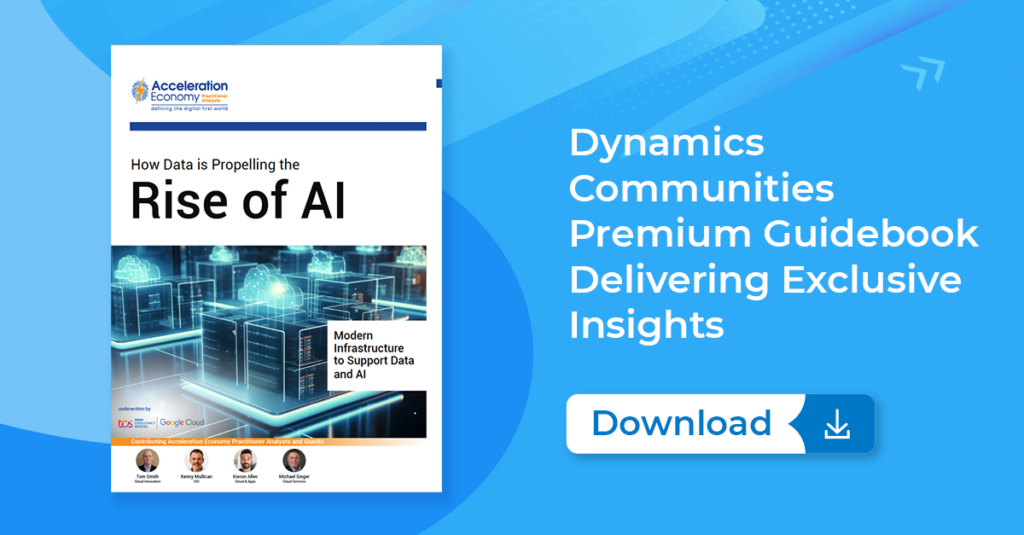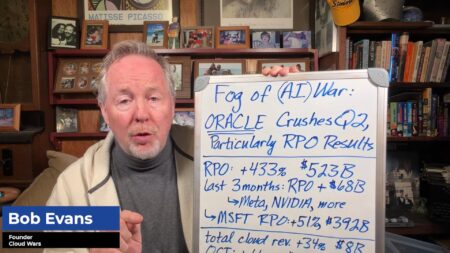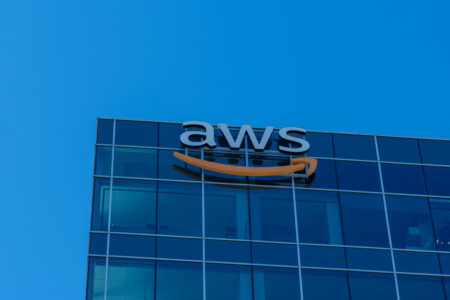Hello, 2024! It continues to be an exciting time to be part of the business technology industry. According to Gartner, $5.1 trillion will be spent globally on information technology over the next 12 months. But how technology is bought (and sold) by organizations is being reshaped by a dynamic set of events, including:
- An extraordinary number of tech platform transformations, led by the application of artificial intelligence (AI) and machine learning (ML) across organizations
- The reduction of software subscription purchases and renewal after significant investment during the pandemic to support remote business requirements
- Despite a robust end-of-year US stock market, macroeconomic uncertainty has C-suite executives and investors in a defensive purchasing postur
3 Emerging Technology Influences
With business and tech leaders prioritizing emerging technology, let’s tackle the three major tech platform transitions underway and understand how they impact tech purchasing.
1. AI and Machine Learning
This dynamic tech duo impacts existing and planned tech investments like no other technology. AI is not just for voice assistants and bots. Companies and technology providers alike are developing AI at an astonishing rate — witness the incredible pace of generative AI product rollouts. The global artificial intelligence market size was valued at $150.2 billion in 2023 and is expected to grow at a compound annual rate of 36.8% from 2023 to 2030.
Ask Cloud Wars AI Agent about this analysis
Every technology purchase gets scrutinized with the universal question: “Can AI solve that?” The result is that AI takes precedence, while other technology evaluations get put on hold until the organization’s AI strategy has been defined.
2. Cloud Platforms with Partner Ecosystems
Business and tech leaders first look to their cloud providers to see what applications and solutions are available on their platform versus evaluating point tech products. This includes the robust partners ecosystem that providers including AWS, Google, Microsoft, ServiceNow, and Salesforce, to name a few, are building. This approach saves valuable time and provides confidence that partners will deliver a proven solution.
3. Low-Code/No-Code Applications
Developing and managing millions of lines of code within an enterprise is laborious. Technology and software development leaders look for low-code and no-code solutions. These platforms reduce the need for expensive coding expertise, increase agility, and trim development expenses. While using these tools is rarely free, it’s more budget-friendly than hiring developers.
Additional Contributing Factors
The generational tech platform shifts are not the only factor altering how enterprises buy and vendors sell technology. The corporate technology purchase process is experiencing more scrutiny and extended review cycles. Rising SaaS (software-as-a-service) costs, macroeconomic uncertainty, and an increasing number of leaders involved in the purchase process are also impacting tech purchases. Let’s break down what’s happening.
Soaring Software Costs
Organizations have overindulged in software subscriptions over the last three years, fueled by the need to support remote and digital requirements brought on by the pandemic and the availability of cheap capital. As the calendar turns to 2024, business and tech leaders see a different reality. Capital costs are much higher, and many are stuck with a bloat of SaaS subscriptions they are trying to reduce.
Recent Vertice research reveals that more than $1 in $8 of corporate spend is now on SaaS. Vertice’s “SaaS Inflation Index” shows that software prices are still increasing. A SaaS stack that cost $1 million a year ago will cost businesses an additional $87,000 today. And software providers face the same inflation reality as three quarters of vendors have increased SaaS pricing.
Risk-Averse Buying Mindset
Business technology buyers and buying groups have shifted into a defensive mode, causing indecision and much longer tech buying and selling cycles. Authors Matt Dixon and Ted McKenna analyzed nearly three million buyer-seller sales interactions in their book The Jolt Effect. They found that the tech decision stalled nearly half of the time because of indecision. The authors describe buyer mindset as FOMU (fear of messing up) versus FOMO (fear of missing out). FOMU occurs because there’s so much fear that it causes deals to halt.
More Professionals Weigh in on Tech Purchases
The number of professionals adding to buying groups continues to increase. Two main drivers contribute to this trend:
- There is more scrutiny in the process with so much money and other resources invested in technology
- Tech and data are being democratized across organizations
The more that employees rely on tech and data to do their job, the more they get involved in the research, evaluation, and decision process. As one CIO shared with me last month, “The more they use, the more they have an opinion, including which apps and vendors.” To add to the complexity, a recent 6Sense survey found that every vendor added to the purchase process adds a minimum of 10 days to the evaluation.
Final Thoughts
As business and tech leaders, we have many options for technology, platforms, and providers. That’s the good news. The reality is with innovation, transformation, and significant spending comes increasing scrutiny and complexity, putting pressure on every decision and investment. At Acceleration Economy, we appreciate that your career and business impact rely on big and small decisions.
Cheers to smart decisions and a healthy and prosperous 2024!












